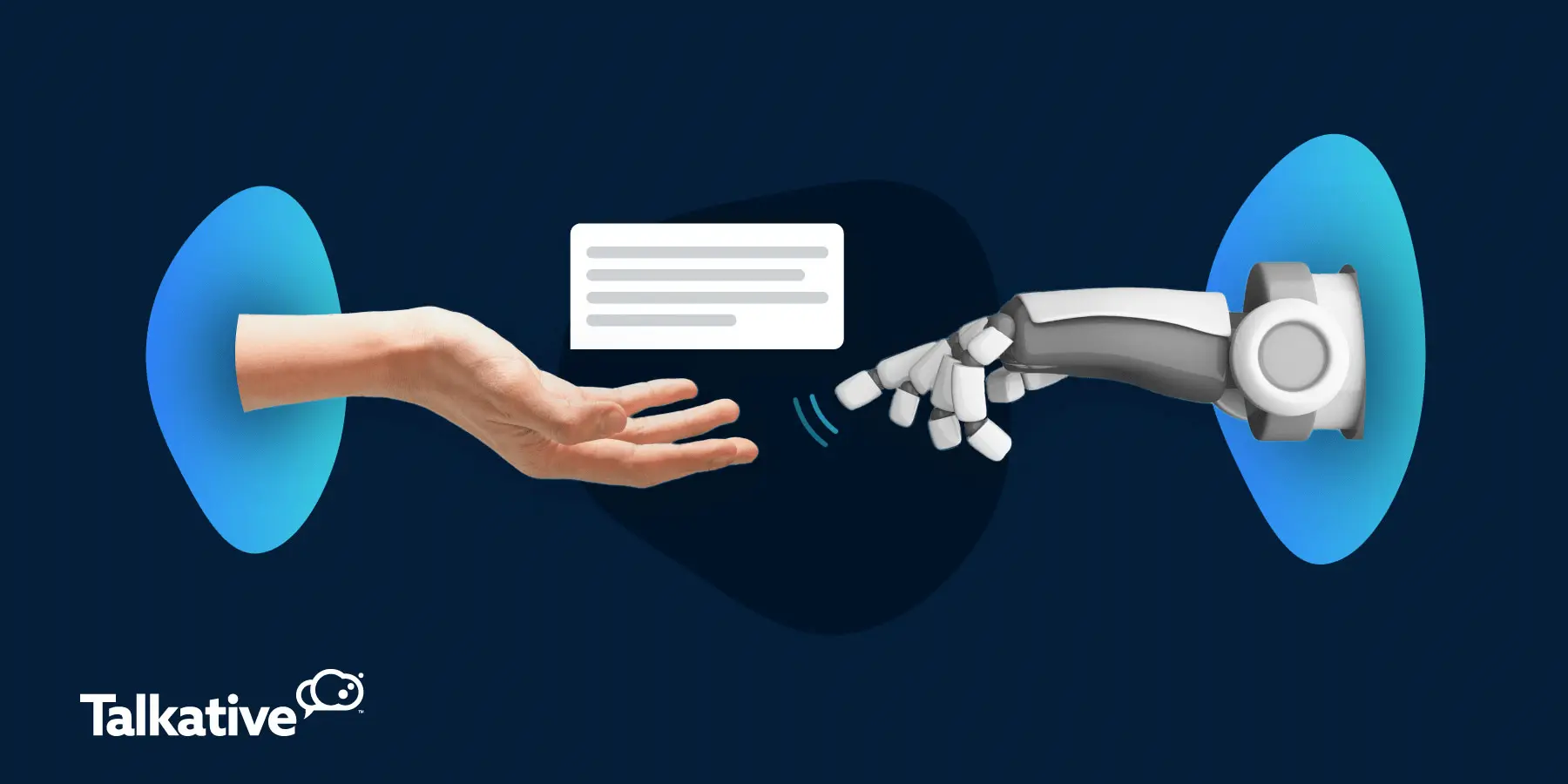In today’s increasingly competitive market, it’s essential that you provide an exceptional customer experience.
For almost any product or service, there are now a multitude of providers. Customers have an abundance of brands fighting for their business every day, with the quality of customer service being the crucial competitive differentiator.
Modern customers have high expectations - they want first-rate service and they want it fast.
In fact, 75% of consumers consider a fast response time to be the most important element of the digital customer experience.
And if that’s not enough to convince you, research has also found that 78% of customers buy from the vendor that responds to their inquiry first.
So, if you’re agonizing over your organization’s average response time and are searching for ways to improve it – look no further.
In this article we’ll cover:
- What average response time is and why it’s important
- The ultimate strategies and solutions for improving average response times
- The benefits of improving your average response time

What is average response time?
Average response time is simply the average amount of time that elapses between a customer contacting your business and an agent replying to them.
This metric can be calculated by dividing the total time taken to respond during a particular time period by the number of replies sent during that same time period.
Your average response time can vary across different digital support channels.
For example, it will be higher in relation to email replies than for live chat responses.
But, whatever the channel, a lower average response time is always better.
When it comes to customer service response times, customers want their queries answered quickly and efficiently.
Unlike first response time, average response time is not limited to the initial contact between a customer and your organization.
It includes any instance where a customer has to wait for a response, at any point in their digital journey.
Average response time vs first response time
Typically, first response time is a more popular metric than overall average response time.
This is because the first contact a customer has with your business sets the tone, and lays the foundations, for the entirety of their customer experience.
However, that is not to say that average response time should be ignored.
It’s an extremely useful metric for ensuring that follow-up enquiries aren’t being neglected and that customers are receiving exceptional support throughout their journey – not just at the beginning.
It's also one of the key indicators of contact center performance.

The importance of average response time
When it comes to optimizing the customer experience, there are many KPI metrics to track and improve upon.
But one of the most important goals for any business or contact center is reducing how long customers have to wait for a reply from your support team.
Minimizing average response time is crucial because slow response times are one of the biggest indicators of poor customer service.
This is significant as research indicates that around 71% of consumers make decisions based on the quality of their customer experience.
A slow average response time can also have a negative impact on conversions.
Shockingly, data from Forrester indicates that 55% of online customers are likely to abandon a purchase if they do not receive a fast response to their query.
As you can see, it’s imperative that you achieve a low average response time as it can directly affect both customer satisfaction and conversion rates.
So, if all of this sounds daunting and you’re not sure where to get started - never fear. We’ve got you covered.
In this next section, we’ll detail the best approaches to improving average response times for your business or contact center.

How to improve average response time
Achieving an optimal average response time can be challenging for businesses.
This is especially true in the digital era, as customers demand and expect service that is both high-quality and high-speed.
Luckily, there are a range of strategies and solutions that can be utilized to improve your average response time. Take a look at the following ideas to help you get started.
1. Provide exceptional training
One of the best initial strategies for improving response times is empowering your support team with better training and knowledge.
This will lay the groundwork by enabling agents to be more efficient. They will handle more cases more quickly and without needing assistance from their supervisor or other employees.
You should aim to do the following:
- Make your agents experts in the products / services your business offers
- Train your support team to multitask and prioritize tickets effectively
- Provide a well-created internal knowledge base for employees to refer to
- Teach your agents customer service skills and best practices
At the end of the day, your employees are the foundation and front-line ambassadors of your business.
Therefore, you must ensure that they are well-trained and able to provide both fast and exemplary customer service.

2. Leverage the right features
In recent years, businesses and their contact centers have undergone a rapid digital transformation.
This has resulted in the emergence of new capabilities within customer support channels.
You can make use of these forward-thinking features to improve your average response time across all channels. Consider the following examples…
Average wait time displays
A clever way to lower your response times is the incorporation of average wait time displays in your live chat and video chat software.
This feature enables you to manage customer expectations and helps prevent customer frustration and uncertainty.
It also gives customers the opportunity to switch to a different contact channel if their issue isn’t urgent or if they don’t want to wait, thereby lowering wait times even further.
Canned responses
Having automated canned responses for your web chat saves time for agents. It will also minimize the response time at the start of interactions.
This is a great feature to have, as it will improve first response time as well as overall average response time.
That’s why the Talkative solution includes this feature as well as intelligent response suggestions powered by generative AI.
Chatbots
Unfortunately, it’s impossible for human agents to be constantly available to provide instantaneous responses to your customers.
Therefore, you might consider the use of a chatbot in addition to live chat. Chatbots have the advantage of artificial intelligence, 24/7 availability and immediate replies.
And, if a customer query can be resolved by a chatbot, it will take them out of the chat queue. This will lower the wait time for others and improve your average response time.
Auto-replies for emails
The email auto-response is a simple yet effective technology that can easily be implemented.
It lets customers know that you have received their inquiry and what steps will be taken next.
The response can be tailored to your business and can provide further information such as:
- A time-frame of when they can expect further contact
- The operating hours of your customer service team
- A link to your business FAQs (it may be the case that they simply haven’t found these, and the answer to their query is accessible there.)

3. Set goals and measure your progress
In order to improve average response times, it is vital that you set quantifiable targets.
Make sure you include a plan for how you are going to achieve these aims within a specified time frame.
You should also strive to set goals that are specific to particular contact channels. As we touched upon earlier, average response time will vary across different digital platforms.
Example: By the end of next quarter we will decrease our live chat average response time to a maximum of 20 seconds by implementing canned responses and providing staff with updated training.

4. Implement omnichannel software
One of the best ways to manage floods of customer messages is with omnichannel solutions.
Advanced omnichannel software will distribute the volume of support requests across multiple communication channels.
This helps shorten response times across the board by preventing individual channels from being bombarded and overwhelmed with customer interactions.
Omnichannel support also gives customers more options, allowing them to choose the channel that is most convenient for them at that time.

Advantages of a better average response time
Now that we’ve discussed how to go about improving your average response time, you may still be wondering whether it’s worth the effort.
If your business or contact center seems to be getting along okay with slow response times, why change it?
Well, sit tight. The following benefits of a better response time might surprise you.
1. Increase customer satisfaction
Let’s begin with the obvious – when customers receive a response quickly it makes them feel important.
In fact, 77% of customers state that valuing their time is the best thing a business can do to ensure customer satisfaction.
A base of happy and satisfied customers is vital for success and for maintaining a positive public image for your brand.
2. Boost brand loyalty
Making efforts to provide faster responses will help you build brand loyalty through great customer service.
Excellent customer experiences will create loyal customers who keep coming back for more.
In fact, 91% of customers are more likely to make a repeat purchase after a positive customer experience.
Loyal customers will also be more inclined to engage in brand advocacy and recommend your business to others.
3. Capture more leads
If you’re looking for ways to increase your business’ lead generation, then improving your average response time is a great place to start.
Research indicates that businesses who reply to customers within an hour of receiving a query are seven times more likely to qualify the lead than those who reply even an hour later.
Clearly, time is of the essence when it comes to generating more leads for your business.
4. Close more sales
When your support team responds faster, there is an increased number of opportunities for customer engagement and potential sales.
There is also a higher chance to beat your competition to a conversion, as 78% of customers buy from the company that responds first.
Undeniably, poor response times result in slower sales and lower conversion rates.

The takeaway: A better response time benefits your business
As we’ve demonstrated, bettering your average response time is an incredibly valuable pursuit that will benefit your business and contact center in numerous ways.
Not only can it enhance the customer experience and improve your business’ reputation, it can also boost conversions and overall efficiency.
And considering that 82% of consumers now expect an immediate response to purchase queries, it is clear that businesses need to do everything in their power to reduce average response times across all digital channels.
But it’s worth noting that you cannot simply trade quality support for quicker responses - customers demand both.
It’s important that you find the balance between speed and great customer service.
Only then can your business fully reap the rewards of a better average response time.



